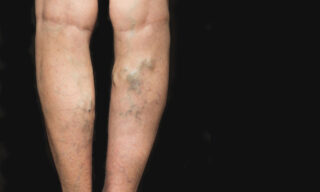
Advanced Chiropractic & Nutritional Healing Center
Suite 107
Frederick, MD 21704

More Vascular Health Articles
What Are Varicose and Spider Veins?

What Are Varicose Veins?
Varicose veins are twisted veins that can be blue, red, or skin-colored. The larger veins may appear ropelike and make the skin bulge out.
Varicose veins are often on the thighs, the backs and fronts of the calves, or the inside of the legs near the ankles and feet. During pregnancy, varicose veins can happen around the inner thigh, lower pelvic area, and buttocks.
What Are Spider Veins?
Spider veins, or thread veins, are smaller than varicose veins. They are usually red. They may look like tree branches or spider webs. Spider veins can usually be seen under the skin, but they do not make the skin bulge out as varicose veins do.
Who Is Most Likely To Get Varicose And Spider Veins and What Are the Symptoms?
Women are more likely to have varicose veins and spider veins. Pregnancy, older age, and obesity can also increase your risk of varicose veins and spider veins. They are often painless and do not usually cause health problems.
Some people do not have any symptoms with varicose veins and spider veins. If you do have symptoms, your legs may feel extremely tired, heavy, or achy. Your symptoms may get worse after sitting or standing for long periods. Your symptoms may get better after resting and putting your legs up.
Other symptoms that may be more common with varicose veins include throbbing or cramping, swelling and itching.
What Can I Do At Home To Help Varicose Veins and Spider Veins?
You can get regular physical activity. Muscles in the legs help your veins push blood back to the heart, against the force of gravity. If you have varicose veins or spider veins in your legs, any exercise that works the muscles in your legs will help prevent new varicose veins or spider veins from forming.
Lose weight, if you are overweight or obese. Extra weight makes it more difficult for your veins to move blood back up to your heart, against the force of gravity. Losing weight may help prevent new varicose veins or spider veins from forming.
Do not sit or stand for a long time. If you have to sit or stand at work or home for a long time, take a break every 30 minutes to stand up and walk around. This makes the muscles in your legs move the blood back up to your heart more than when you are sitting or standing still without moving around.
Wear compression stockings. Compression stockings help increase blood flow from your legs.
Put your feet up. Rest your feet on a stool as much as possible when sitting to help the blood in your legs flow back to your heart.

















